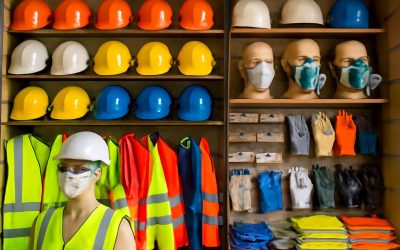Personal protective equipment is clothing and equipment that protects body systems against hazards that can cause serious injury, illness or death. It is not a substitute for engineering and administrative controls and must only be used when the risks cannot be eliminated or reduced. It includes head, eye, hand and body protection.
The PPE required for different work tasks depends on the nature of the hazard. Examples of this include a hard hat for tasks that can result in an impact to the head, and gloves and aprons for working with liquids or food. It also includes respirators, goggles and face shields, and full-body suits. It is important that employers assess the hazards of a job and determine whether PPE is needed before employees begin work. This assessment should be documented, and the appropriate PPE must be selected and used.
It is not acceptable to allow exemptions from wearing PPE for jobs that ‘only take a few minutes’ as these may result in an incident that requires full PPE. It is also not appropriate to assume that employees who wear PPE are completely protected. This is false because it is not possible to eliminate all of the hazards from a job. PPE only minimizes the likelihood of exposure and can reduce the severity of an incident.
Infection prevention and control is essential to healthcare. The article describes how the use of standard precautions, including the use of PPE, can reduce chemical, biological, radiological and nuclear contamination threats that healthcare workers encounter.
A toolbox talk on PPE is recommended for all healthcare workers to raise awareness of the need to wear proper PPE. The discussion should cover the types of PPE, the standards for using PPE, and the importance of assessing and evaluating the PPE to ensure that it is effective.
Surgical procedures necessitate the use of sterile gloves. They should be replaced immediately after each patient, and gloves that have been worn should not be shared between patients. In some situations, a special respiratory mask (respirator) will be needed to prevent the spread of germs, especially in high-risk areas such as intensive care units. This is usually a NIOSH approved filtering face piece (FFP) or powered air-purifying respirator, and workers who require this must be fit-tested and undergo medical evaluation before being allowed to use it.
Other examples of PPE include a nitrile (acrylonitrile) glove that provides a similar barrier to natural rubber latex for those with allergies, and disposable gloves for cleaning procedures. It is important that these and other pieces of PPE be used as directed, cleaned regularly, and disposed of in the correct manner. It is also important to maintain a comprehensive inventory of PPE and to ensure that it is in good working condition. The inventory should be updated as the need for PPE changes. In addition, employers should train employees on the appropriate use of PPE, and check that it is being worn properly.


0 Comments